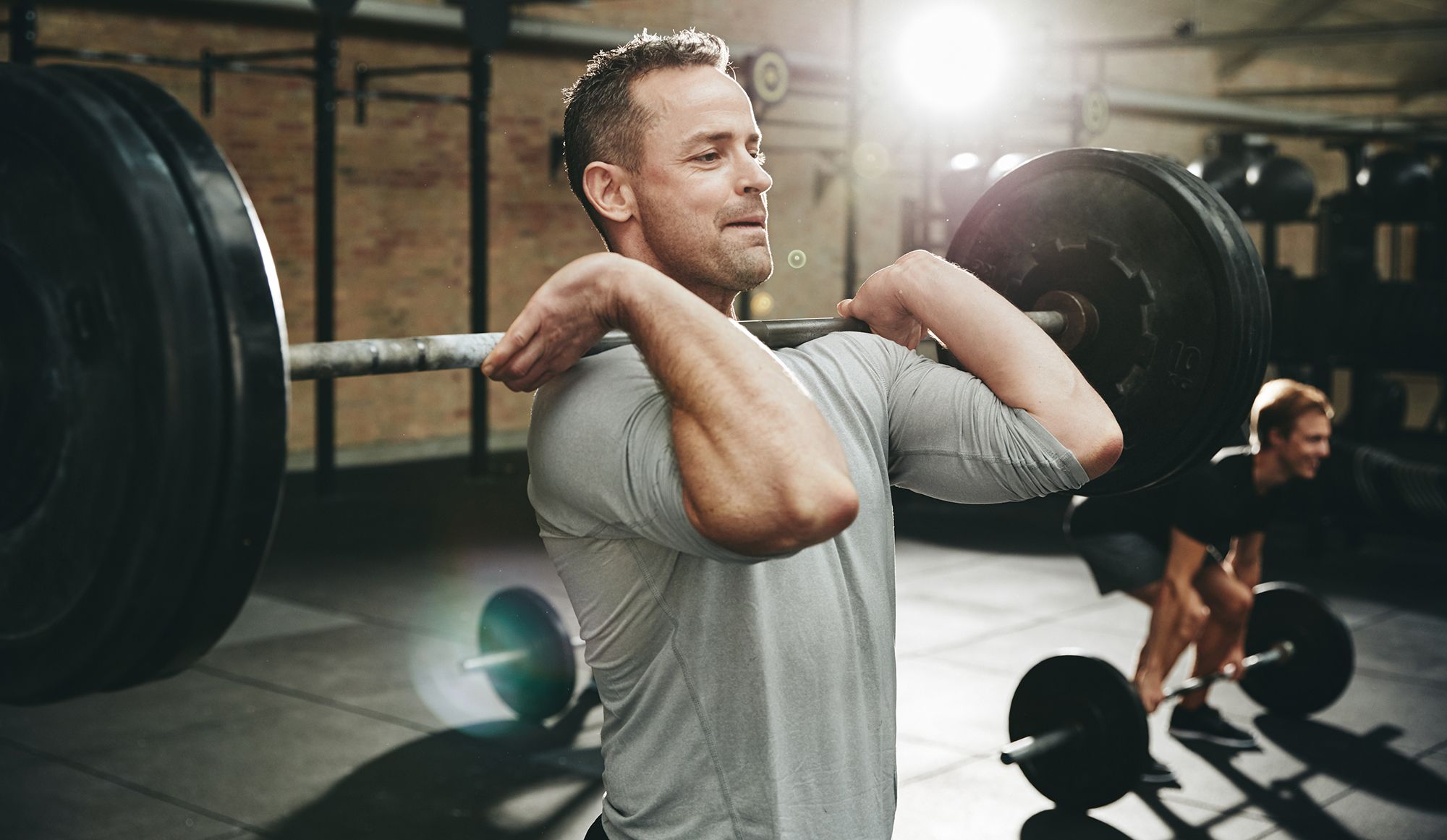What’s considered the perfect workout?
Here’s the real question: What’s your goal? Is it overall fitness? In that case, you might want a more cardio-based workout. Is your goal overall strength? You want more strength training, then, whether lifting for power or endurance or a combination of the two. Regardless of what your fitness goals are, let’s look at components you should consider in your workout routine, particularly when building a strength training program.

How often should you work out?
Answers will vary depending on your current level of fitness and your goals, but in general, you want to work out often enough to improve your fitness without increasing your risk of injury. As a result, if you’re just beginning a strength training program, start with a couple of times per week. If you’re looking to build on a strength training program, you can consider more frequent intervals. Many health experts suggest at least 150 minutes of moderate to strenuous exercise per week, but that exercise should be varied, rather than all cardio or all strength training.
How long should a workout be?
For some people, an effective workout may be as short as 15-20 minutes. For others, you may need as long as a few hours. The biggest variables to consider are your current fitness level, the intensity of your workout (you may see significant returns on high-intensity interval training (HIIT), for instance, in a far shorter workout), and your fitness goals. In general, shoot for at least 30 minutes (or longer if weight loss is a goal).

How many sets should I do?
You should build up your number of sets and repetitions as you get more comfortable with your workout routine and as your fitness levels begin to match your workout level. When first starting a program, a good rule of thumb may be to start with no more than 2-3 sets and no more than 10-15 reps. Start with fewer than you think you can do and prioritize form when first starting.
How much cardio should I do each week?
For some individuals, cardio a few times a week is enough to maintain or even build anaerobic fitness. If your goal is more aerobic-based, such as training for a marathon, you will want to do more cardio. Every program should be tailored to your individual fitness level, fitness goals, and experience with the types of workouts you are doing. That said, everyone should do some cardio—even powerlifters and bodybuilders can benefit from focused cardio workouts that may help them build endurance—just as everyone (including marathoners) should do some strength training.
Which muscle groups should I target?
When it comes to building up muscle groups, consider functionality. Ask yourself, what is my fitness goal? Do I simply want to look good (in which case you may want to focus on certain muscles), or is there a fitness level I want to achieve (whether that’s running a six-minute mile or competing in a triathlon or something else entirely). Specific fitness goals will naturally lend themselves to focusing your strength training on different muscle groups. Basketball and baseball athletes may focus on building core strength and strength suited to very particular specialized tasks, for instance, which can lead to better rebounding ability or batting power. Swimmers may want to build more power in their shoulders and hips. Determining what your fitness goal is will also help you determine which muscle groups to target—especially if you can determine which muscle groups most need to improve relative to your current fitness level or strength. Determining an appropriate volume and intensity for targeted muscle groups is just as important as knowing which muscle groups to target, too.

How many exercises per muscle group?
This, too, is relative to your current fitness level. The general idea of effective strength training is to tire the muscle you’re looking to improve without pushing it to the breaking point. You need to push the muscle group or otherwise, it won’t adapt and give you improved performance. But if you push it too far, you’ll cause an injury. This is why your individual strength training program needs to be appropriate to your level of fitness and previous workout history, especially recent workout history. (If you were able to lift for an hour five days a week in high school, that doesn’t mean you still can—or should—lift for an hour five days a week twenty years later, especially if you haven’t lifted much since then.) As a general rule, exercises that incorporate multiple muscle groups are more effective than exercises that work an isolated area.
How do I determine when to schedule rest days?
You want to schedule your rest days to coincide with when your body can most optimally take advantage of that recovery. Every good strength training program is only as good as your body can recover from that program; without that recovery, your body can’t adapt and instead gradually breaks down. For beginners, start with more rest days (three or more per week); it’s better to gain fitness and strength more slowly than to overdo it when first getting started and end up injuring yourself.

Example weekly routine
Consider this weekly routine as an example.
Monday
- On The Dock Chest and Triceps: use this short but intense chest and tricep workout to sculpt your body on-the-go – developed by Ashton Pienaar
- You can add On The Dock Chest and Triceps to the workout library on your iPhone using this link: Add to workout library
Tuesday
- Rest day
Wednesday
- Kick It With Legs: build a solid foundation with this explosive lower body workout routine
- You can add Kick It With Legs to the workout library on your iPhone using this link: Add to workout library
Thursday
- Rest day
Friday
- Back and Shoulders Hypertrophy: a workout focused on effective muscle breakdown and endurance while burning maximum calories and increasing stamina – developed by Tyler Kelly
- You can add Back and Shoulders Hypertrophy to the workout library on your iPhone using this link: Add to workout library
Saturday/Sunday
- Pick one day as your workout day and make the other a recovery day
- Shredded Shoulders and Calves: power through these five exercises to maximize definition and size
- You can add Shredded Shoulders and Calves to the workout library on your iPhone using this link: Add to workout library

When deciding which lifts to start with, pick no more than a handful of upper body exercises and no more than a handful of lower body exercises to start. Try to make sure at least a few of each utilize your core muscles in your abs, hips, and lower back, too. Make sure you learn proper form and technique and start with less weight rather than more. Listen to your body—starting a new program shouldn’t be easy, but it shouldn’t feel like you’re injuring yourself, either. Consider supplementing with bodyweight exercises, too, as you get more comfortable with your strength-training routine.
References
- https://health.gov/news/blog/2012/10/how-much-daily-exercise-is-best-for-weight-loss/
- https://www.hhs.gov/fitness/be-active/physical-activity-guidelines-for-americans/index.html
- https://www.mayoclinic.org/healthy-lifestyle/fitness/expert-answers/exercise/faq-20057916
- https://www.ncbi.nlm.nih.gov/pmc/articles/PMC4562558/
- https://www.ncbi.nlm.nih.gov/pmc/articles/PMC4592763/
- https://www.health.harvard.edu/exercise-and-fitness/7-tips-for-a-safe-and-successful-strength-training-program
